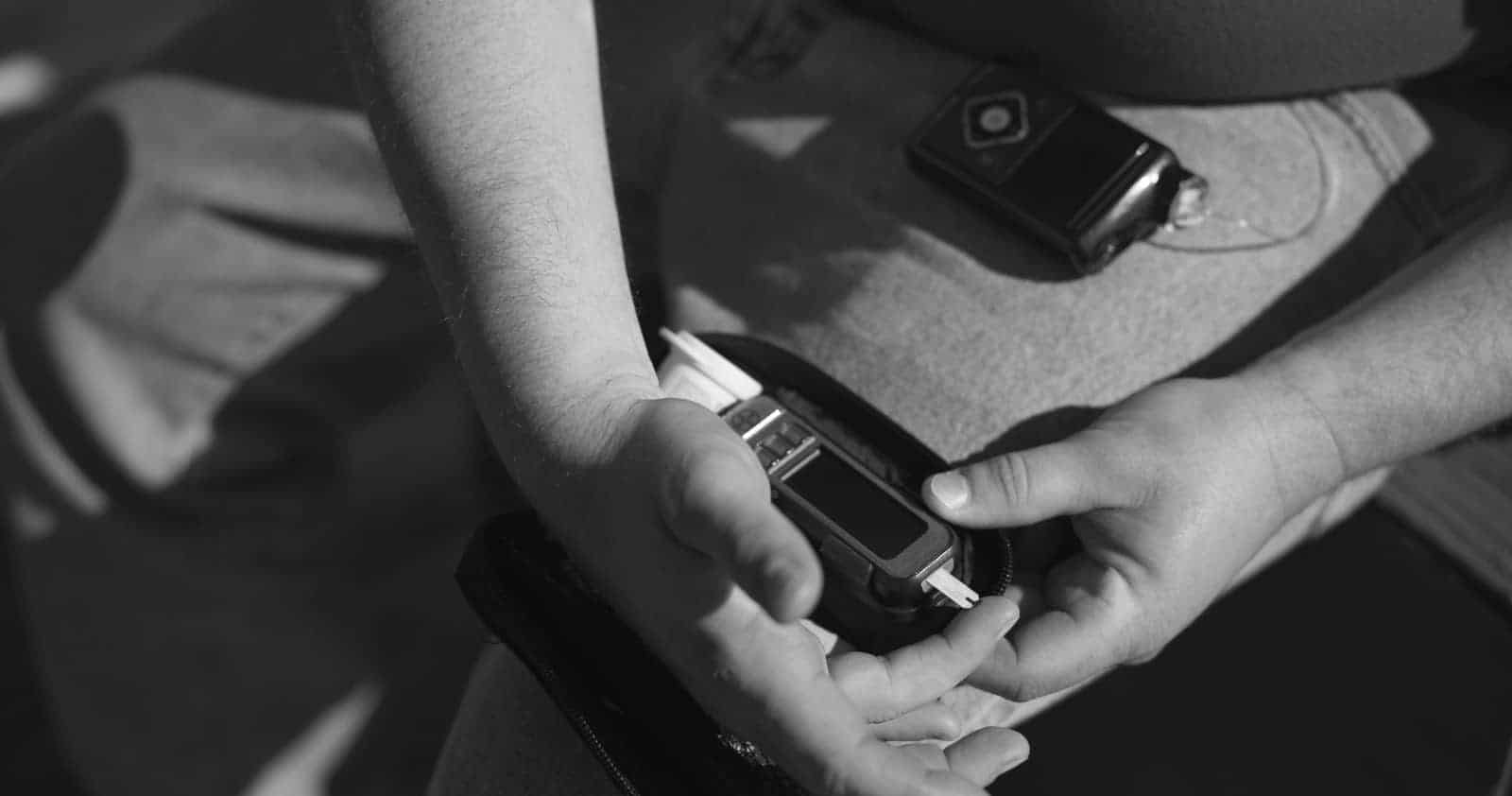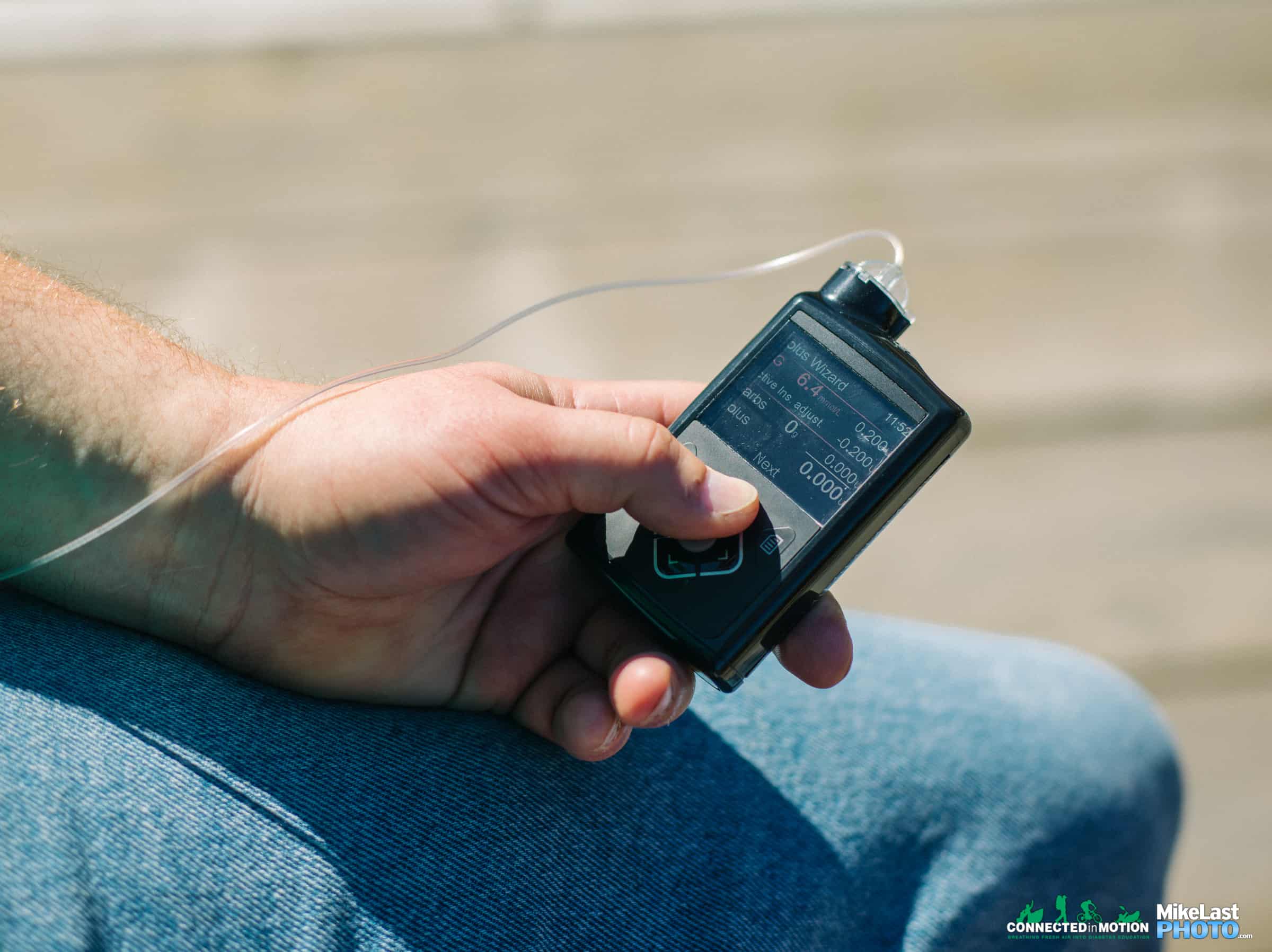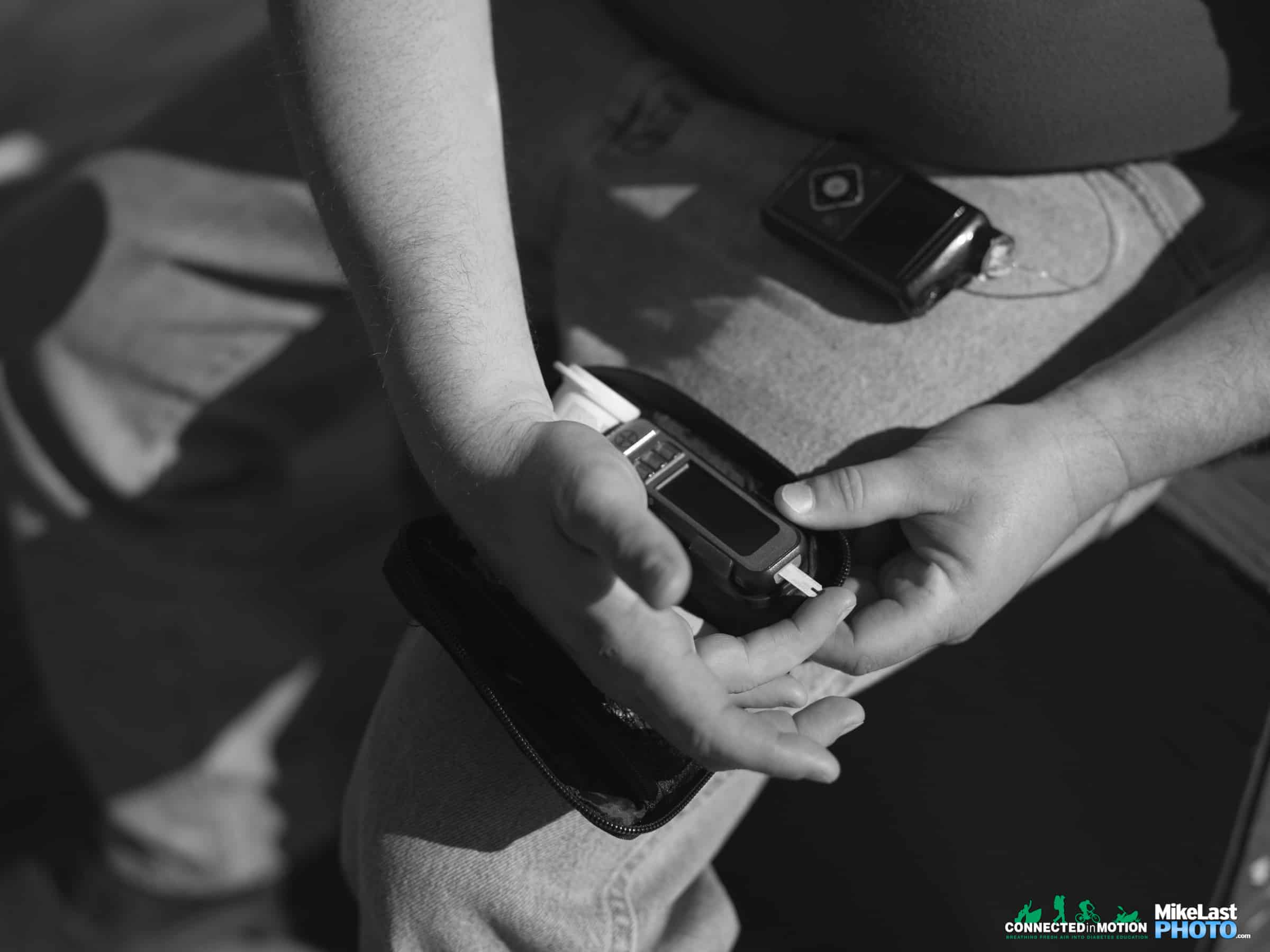There are some new kids on the block when it comes to insulin pumping in Canada. Recently, Medtronic’s 670g hit the streets and we wanted to catch up with two community members who were giving it a go to find out what their experiences have been like! Thanks to Paul Chalmers and Meghan Lowry for sharing their experiences with us.
Disclaimer: Please check out CIM’s Partners Page to learn more about the companies we work with. This post was not paid for and does not represent sponsored content, but it’s important to recognize that we may be biased based on the fact that some companies highlighted below support CIM in different ways. We still thought this info was important for you to know about.
670G Primer
To learn more about the 670G you can visit the Medtronic Canada website or check out our blog highlighting its features. Below are a few of its key highlights:
- Reservoir Size: Can hold 300 units of Rapid-Acting Insulin
- Site Specifics: Works with Medtronic’s line of pump sites – Quick-set, Silhouette, Mio, Mio 30, and Sure-T.
- Waterproof: Up to 3.6m for 24 hours
- Bolus Wizard: Built-in bolus calculator that considers active insulin, carbs and BG to help determine precise bolus amounts
- Colour Home Screen: Home screen shows active insulin, CGM reading (if using CGM) OR last BG readings entered in past 12 minutes, bolus and basal options
- Basal Patterns: Ability to save 8 basal patterns (think, sick day, aerobic workout day, travel day, ‘time of the month’ day… the list goes on!)
- Preset Bolus: You can save preset boluses. Do you always bolus the same for breakfast? Save that bolus in your pump for easy access
- Event Markers & Reminders: You can tag events on your pump to show up in your records – exercise, feeling sick, stressed, etc. You can also have the pump send you reminders: check BG 2 hours after meal, etc.
- Auto Mode – automatically adjusts basal insulin every 5 minutes based on glucose readings – Some user interaction required.


Guardian Sensor 3
- Accuracy: Medtronic’s most accurate sensor to date
- Size: 80% volume reduction compared to Enlite™ sensor
- Adhesive: Updated sensor adhesive patch to enhance application and reduce irritation
- Wear/Duration: Up to seven days of sensor life and a shorter start-up time
Jen Hanson: Set the scene for us – Tell us a bit about your story! Who are you? When did diabetes come into your life? What have you used to manage your diabetes over the years?
Paul Chalmers: I was diagnosed with Type 1 diabetes on June 6, 2000. I knew the diagnosis was going to change my life – I never knew it would be in the way that it has! Back in my early days of diabetes, I had what I called ‘Superman Syndrome’. I didn’t take care of myself. I thought that there was no way diabetes would ever impact me. I went 10 years like that. After my self-diagnosis with Superman Syndrome, I decided I needed to turn things around and go on an insulin pump. My first insulin pump was the Roche Accuchek Spirit. I loved it – It helped me think about diabetes less. I was able to loosen up routines in my life. Eventually, I moved to the Animas Insulin Pump, which I was using until I made the switch to the 670g. In 2016, I got involved with Connected in Motion by attending my first Slipstream Weekend. In 2018, I was selected as a member of the CIM Adventure Team and completed some epic trekking in the Rocky Mountains of Alberta. I currently live in Niagara Falls, Ontario with my husband, Bryan.
Meghan Lowry: I was diagnosed while on a vacation in Florida when I was 10. For anyone who remembers being diagnosed, I’m sure you can relate to how amazing that fresh squeezed orange juice tasted at the time! I ended up in the Mease Hospital in Dunedin, where they wouldn’t let me leave until I could give my own injections! The next summer, I started attending Camp Huronda, a camp for kids with diabetes in Ontario, where I stayed through my Counsellor-in-Training year. In 2009, I decided to move from Multiple Daily Injections to an insulin pump. Previously, I had avoided pumping because I didn’t like the idea of having something attached to me all of the time. I knew, though, that I wanted to have a family and that a pump was a good choice to help me manage my BGs just a bit better. Today, I would not give up a pump for anything. I have been a Medtronic user since Day 1, but have not always used a Continuous Glucose Monitor. I just hated the beeping and all of the reminders and decided it wasn’t for me.


CIM’s helpful reviewers of the Medtronic 670G, Paul Chalmers (Left) and Meghan Lowry (Right).
JH: What made you decide to go on the Medtronic 670G Insulin Pump? What drew you to making the decision?
PC: I actually had 2 full years left on my Animas warranty when I made the decision to move to the 670G. With Animas no longer in business, I knew I had the choice to wait things out until that warranty ran out and to see what was available in the market when 2021 came around, OR I could take Medtronic up on its offer to switch me over to their brand of pump. I decided to dive in with a new pump company and find out what the new technology could do for me NOW, instead of waiting any longer.
ML: I moved to the 630g last year once I qualified through Assistive Device Program (ADP) funding. I had originally made my decision to move to the 630g because of the Smartguard Technology [known by many users as low suspend]. At the time, I was paranoid at night time. I hated the idea that I might go low, and I’d be sleeping and not able to do anything about it. I also commute quite a bit to work and didn’t want to worry about lows while driving anymore. Not long after I moved to the 630g, the 670g came out and I knew that I wanted to give it a try. The benefits of Auto Mode, being able to move to a hybrid closed loop and perhaps, one day, a closed loop pump were so exciting! I’ve been on the 670g for about 8 weeks now.
JH: What was one thing that surprised you about the Medtronic 670G?
PC: I totally wasn’t expecting it to work as it does. I expected a lot of interaction with the pump. I expected to be pulling it out, pushing buttons, and looking at it constantly, but it turns out the opposite was true! I really hardly ever interact with the pump. I can go 8 hours and stay ‘in range’ and not ever look at my pump! I was actually a bit nervous starting the 670g because I had read lots of reviews out of the US that reported lots of interaction, much button pushing, continuous beeping. I was surprised that I had the total opposite experience. I’ve since learned that the US version of the 670g doesn’t include a new microchip that the Canadian versions are being produced with. The microchip allows us specialized features and different experiences than our friends south of the border.
[Note about the CANADIAN Guardian Sensor 3 – In Canada, Medtronic launched an updated version of the Guardian Link (3) transmitter – which is now also available in the U.S. but was not available at the time of their launch. The Guardian Link (3) transmitter launched in Canada has a software update to the version of the transmitter previously launched in the U.S. that was made to address repeated requests for BG values in Auto Mode. The U.S. had received reports of repeated BG and calibration requests within a 45-minute period, making it difficult to enter or stay in SmartGuard™ Auto Mode. Updates were made to the software of the transmitter to help patients that experience repeated BG requests. The original version of the transmitter that the US community used was never launched in Canada.]
ML: I’ll admit – it took longer than I wanted to get used to using the 670g. The technology is very smart, but it does take time to get to know your body. It is actually learning about you as you wear it. I was told it would take about 6 weeks to get to know my patterns and I think that’s pretty accurate. Not only that, but you have to learn to trust the system and that took a bit of time. It felt like a big step to put all of my trust in a tiny machine after taking care of my diabetes and making diabetes decisions totally on my own for so many years. My lows were eliminated almost immediately, but I was still having lots of highs. I think it was because I was correcting my lows in a similar way to how I was correcting before starting on the 670g (with too many carbs!) and yo-yoing a lot. I was also surprised at how accessible all of my data felt! I was able to upload my readings and make adjustments as needed. I felt like having access to all of the data from my pump really helped me understand my diabetes better. I actually increased my basal rates which would end up bringing my BGs down, but then the 670g would lower my basal as I was approaching low. The whole thing had seemed counter-intuitive, but has really worked well for me!
JH: What is one recommendation you’d like to pass on to others starting their 670g journey?
PC: Don’t jump in with both feet. Start with just a few of the features turned on and gradually increase them to avoid beep-burnout. At first, I only had my low-alert alarm on, along with the calibrate alarm and the hard-set 2.8 low alarm.
ML: The idea that everything is not going to change overnight. Be patient. It takes work and trust but has been amazing for me. I’d recommend talking to other people who are using the 670g. I’ve learned so much from other community members, whether it’s through conversations online, through focus groups I’ve been a part of, or by connecting face-to-face at our local Guelph T1 Meet-up group.
JH: What was the biggest learning curve for you when you started with the pump?
PC: Definitely letting go and trusting the pump. For me, insulin pumping has always been user-driven. I was always wondering if my basal rates were ‘right’. Now, with the possibility of 288 custom basal rates per day, I don’t even worry about it. Each day’s basal rates are different depending on my needs for that day. It took me about a week until I started trusting it. Now, there’s no looking back!
ML: Learning to trust the pump and to be patient with it. And to trust the sensor. I hadn’t had a lot of success with the enlite sensors in the past but I’ve been 100% happy with the Guardian Sensor 3. The pump was beeping a lot at first and I thought I’d get burnt out from the alarms, but know that it really does get better. You’ll get over the hump, it will learn your body, and you’ll go hours without even thinking about your diabetes.
JH: Was there anything you were nervous about before starting on the Medtronic 670g pump?
PC: I was nervous to learn a new system. Change is always tricky! I was also nervous to use a new CGM system. I had only ever used the Dexcom before. Although the infusion sets I use are similar between pumps, the insertion device for the Guardian Sensor 3 is quite different. I was nervous to give it a try. I was also unsure about losing my CGM readings on my phone. That was something I had really got used to in the past, but I found that I have been worried far less about my BG levels, which means that I’m not looking at numbers nearly as much as I was before. Learning a new pump system was definitely a challenge on my mind but it really turned out to be not a big deal at all!
ML: I was nervous because the concept of a hybrid-closed-loop was so new to me, that I didn’t know what questions to even ask during my training. I didn’t know what questions to ask when I was deciding to use the pump. I also was nervous about the adhesive. I’ve had lots of problems in the past with adhesive from CGMs and from pump sites. Moving to a new system (I had used the Freestyle Libre before) made me nervous because of the problems with skin irritation and rashes that I’d had in the past. I’ll admit – I’m not irritation free, but am learning strategies to deal with it.
JH: What are you most looking forward to in 2019?
PC: I’m taking on the lead volunteer role with Connected in Motion to help bring the Slipstream in the City event back to life and I’m really excited for the opportunity! I’ve also been invited to join the Friends for Life Lead Staff Team, working with Sarah on the Tween Program and will be heading down to Disney World in July to learn the ropes!
ML: I’m looking forward to Slipstream! I am also looking forward to feeling great. I am feeling healthy and happy right now and am looking forward to more of this in the future!







